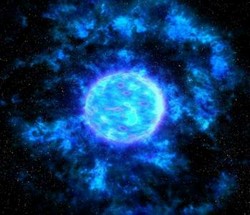The Dragon Never Sleeps
by Glen CookGlen Cook's The Dragon Never Sleeps is one of the best books I have ever read. I recommend it without reservations.
The Voice Of The Dragon Echoed Across Canon Space..."Surrender or die!" For four thousand years the Guardships had issued that dictat. Built and armed by great mercantile houses, their computer cores alive with the engrams of great past leaders, they were feared all along the Web, the spidery network that links the far-flung worlds of Canon Space. Beholders to none, impossible to escape, the invincible warships maintained peace with an iron grip.I suspect the author of the blurb never read the book. On second thought, I'm sure of it.
Now a dark Presence believes it has found a way to wrest the Web from the invincible. The immortal Ku warrior Kez Maefele knows the ships can be conquered, but he is alone. And as the Guardship VII Gemina streaks across the Web to confront the Presence, he must begin his own battle for survival.
The Guardships were originally created to protect trade, police space, repel invaders, and generally further the interests of their creators, the mercantile houses. Their crews quickly struck that last provision from their job descriptions, however, and generally treat everyone the same (much to their creators' chagrin). The Guardships are named after Roman legions, which happens to be an interest of mine. As a result, I have always had a special fondness for VII Gemina. (For a list of Roman legions, and references to them in science fiction, please click here).
Guardship word is law, up to and including interdiction from contact with the rest of Canon Space. In general, this system seems to work, but the Guardships don't really have a central command. There is a central base (which reconstructs Guardships on the very rare occasions when one is damaged or destroyed), but each Guardship is pretty much an independent entity, united with the other Guardships through a common ideology more than anything else. This independence extends to how they are organized internally (see Deification, below) as well as how and where they operate. Guardships have occasionally gone rogue -- at which point they are hunted down without mercy and destroyed.
Guardships are huge (think "Death Star") and have a crew of tens (if not hundreds) of thousands, including entire armies kept in suspended animation. (On at least one occasion an entire regiment was brought out of cold storage to conduct a planetary assault.) This is the original crew -- when not incarnated they are stored as computer patterns, and some time after a previous incarnation dies, a new incarnation is created. Each new incarnation, though, starts at the bottom; he or she may hear of a previous incarnation's exploits, but doesn't remember them. VIPs can be Deified, which means you live as a computer program rather than as a corporeal body. Deification is handled differently on each ship. On VII Gemina, Deification is handled through a vote (of the Deified), and Deification can be revoked. On other ships, the entire crew may be Deified.
I realize that I have written for three paragraphs and I haven't even mentioned the plot -- and I'm not going to, for two reasons: First, the plot is relatively involved, and I can't do it justice. There is much political intrigue, and a lot of action. Second, this book is worth reading for the texture of it. Examples:
- There are three senior command positions VII
Gemina: WarAvocat, OpsAvocat, and ServAvocat. The
WarAvocat is senior, and controls the ship in battle.
OpsAvocat handles the actual operation of the ship -- the
WarAvocat will tell the OpsAvocat where to send the ship,
and the OpsAvocat is the one who gets it there. The
ServAvocat is ship's service/quartermaster. These
positions are elected.
The Avocats report to the senior policy positions, called Dictats. It is possible to be elected to more than one position at the same time -- for example, WarAvocat and Dictat.
- When a Guardship is seriously damaged, it can blow
off it's outer hull -- revealing a new set of weapons
underneath. Most adversaries don't know this -- those
that discover it usually don't have a chance to tell
anyone else.
- FTL travel is via an artificial Web between the
stars, which predates even the legends of any of the
races currently on the scene. The extent of the Web is
unknown, but occasionally Guardships will conduct
operations outside of Canon Space, either in preparation
for further expansion or for defensive purposes.
- The computer Core of a Guardship is made out of living tissue. Occasionally Guardships begin to develop a sense of self, which is the first step towards eventual insanity.
I fear that anything I say can't do this book justice, so I'll stop now.


